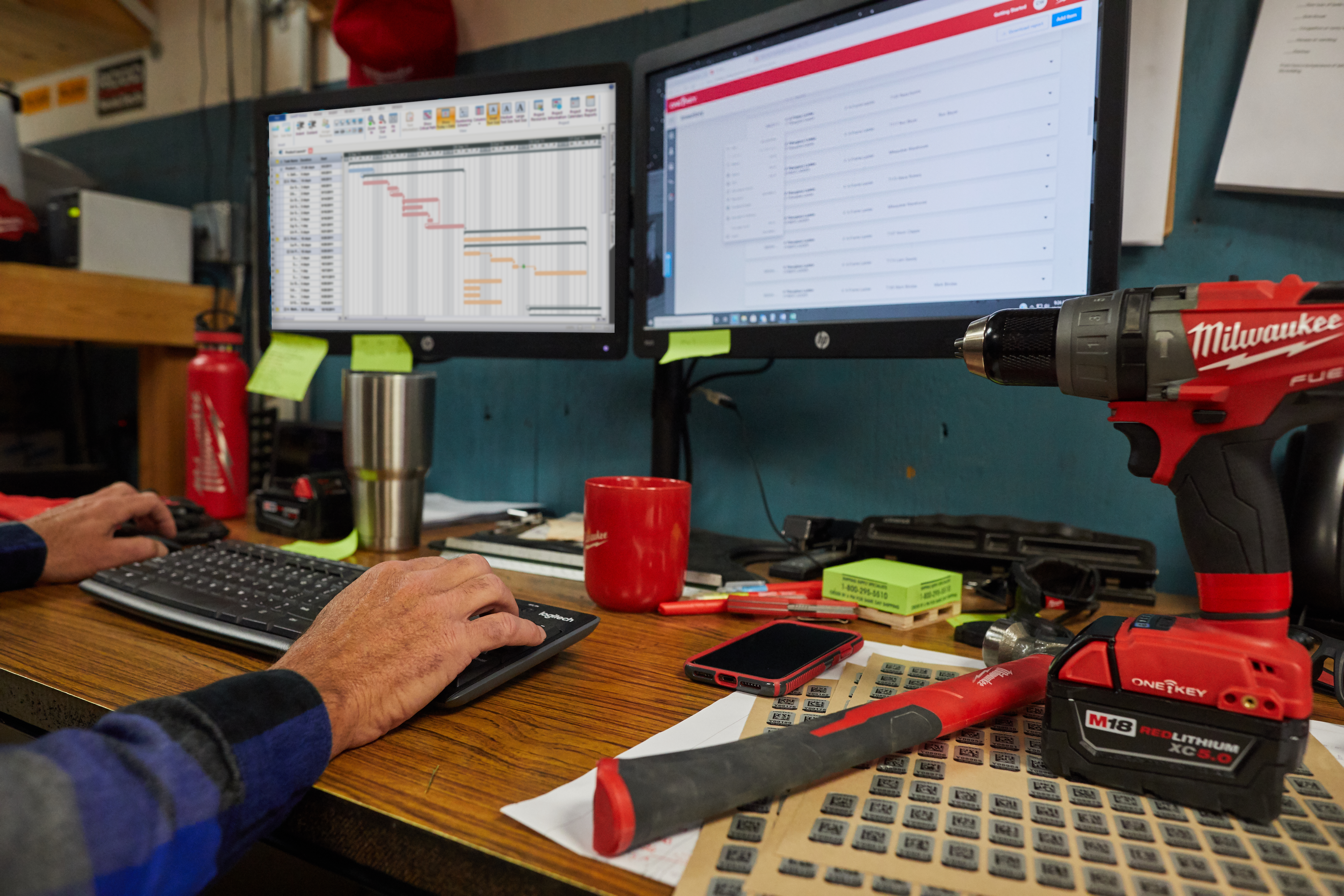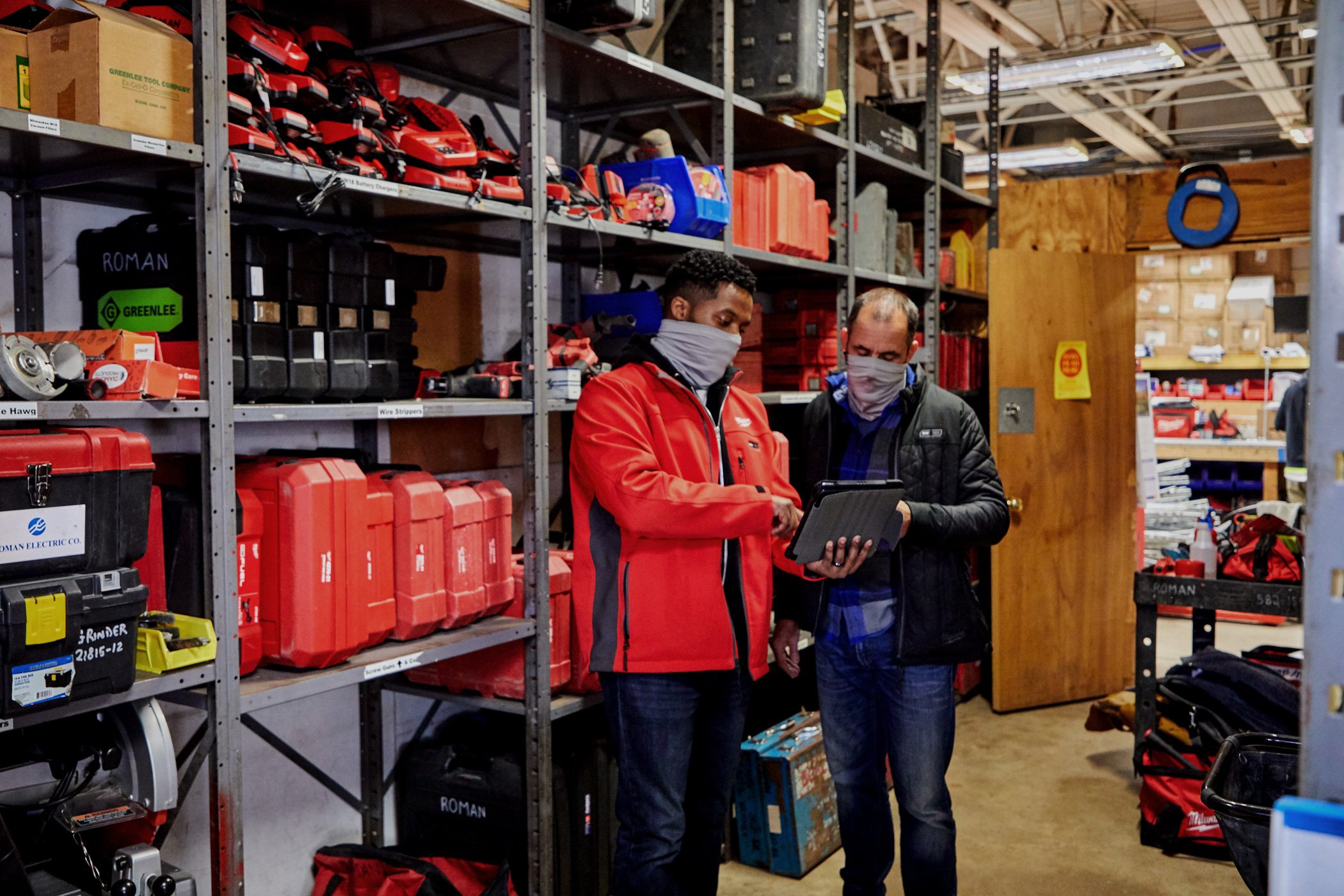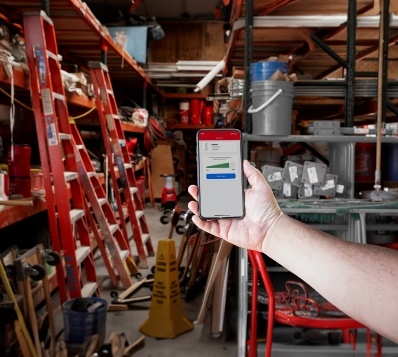Inventory Data and How to Build a Data Inventory Process

In the world of big data, having strong data operations and cleansing processes is critical. Poor data quality is an expensive norm worthy of remediation when you consider that “Data quality problems [have] cost U.S. businesses more than $600 billion” annually, HubSpot reports.
In this article, we discuss the impact of data duplication, manual error, and poor inventory practices that could be costing you productivity, increasing your overhead (think: purchasing duplicates of tools and equipment that sit idly onsite, unused), and eating into your profit margins. We offer inventory data management best practices to improve your internal processes and maximize productivity on the jobsite.
Jump Ahead:
- Inventory Data: The Impact and Bloat of Duplication and Manual Error
- Why Is Inventory Data Important?
- Data Inventory Process: What Information Do You Need for Data Inventory?
Inventory Data: The Impact and Bloat of Duplication and Manual Error
In its Data Wrangling Essentials knowledge base, the Social Science Cooperative at the University of Wisconsin-Madison refers to “duplicate observations” as “occur[ing] when two or more rows have the same values or nearly the same values […which] can be an error in the data and could possibly influence later analyses of the data.” “Due to this,” they add, “it is good practice to examine a data set for duplicate, and near duplicate, observations.”
Duplicate data can occur for many reasons—not having standardizations in place, for example, which can lead to miscommunication and teams working inefficiently in silos.
Consider, for example, when characters Gilfoyle and Dinesh of Mike Judge’s popular HBO show, Silicon Valley, mistakenly both complete the same work (3)—business development specialist Jared Dunn points out that had the company instituted a framework known as Scrum, each team member would have known which assignment they were to work on next, avoiding the chance for wasted resources and duplication of work by two employees.
Not having standardized inventory processes can have a similar effect.
Josh Marchok, a Senior Product Manager at Milwaukee Tool for connected One-Key product development, explains that preventing the inventory data issues that lead to bloat often need to start at the onset before bad behaviors early have a snowballing effect.
Finding a process that works and sticking to it, he explains, is critical. Inconsistent “naming conventions,” he expounds, are a common problem where variations on a theme (e.g., “MKE Drill,” “Milwaukee Drill,” “Milwaukee Tool Drill/Driver”) can go awry.
“Simple data entry errors,” like these, often happen in human nature.
A study produced in Computers in Human Behavior in 2001 highlighted some of these “simple data entry errors – such as typing an incorrect number, typing a number,” which seem inconsequential but in fact can have “devastating effects on research results” (1).
A more recent study of data duplication in databases (2) noted that “Duplicated data objects not only waste storage, (but they can also) mislead users into assuming the model represents more than the single entity.” Among large data sets, “deduplication” can be a complicated procedure to “eliminate redundancy” by “computing and then matching fingerprints of data chunks.” (4)
Why Is Inventory Data Important?
Having healthy inventory and safety stock to prevent “stockout” is critical to prevent inventory-related construction downtime and multiplying construction overruns.
 Why is inventory data important to that? Accurate inventory data visualization ensures that what is supposedly on the shelves of your crib and what actually is there are not at odds with each other.
Why is inventory data important to that? Accurate inventory data visualization ensures that what is supposedly on the shelves of your crib and what actually is there are not at odds with each other.
Inventory Data: Examples of Real-World Problems
Real-world examples abound where poor inventory data management went off the rails (or could have without proper intervention).
- Target Canada: As reported in the Quickbook Blog from Intuit, lack of standardization, failed forecasting, and poor inventory management led to the demise of Target’s launch in Canada with all 133 of the brand’s Canadian locations closing in 2015, just two years after the American retailer rapidly expanded in Canada. Regarding inventory management, Intuit notes, Target purchased inventory for the right price, but “they failed to establish proper guidelines for entering data, there were instances of overseas shipments being held up because the products couldn’t fit into shipping containers as expected, or tariff codes were missing” – ultimately, they failed to get inventory to where it needed to be, leading to some stores having stockouts, while some distribution centers were overflowing. BlueLink ERP notes that problems with software—particularly bad data, inadequate training, and poor inventory management were among the chief culprits. To make matters worse, the same issues that Target experienced in Canadian markets were later felt in America, Supply Chain Digest reported.
- Nike’s Supply Chain Fumble of 2000: As reported in CIO, problems arose with Nike’s ERP deployment with, for example, “different business rules and stored data in different formats,” as well as software requiring heavy customization to operate with Nike’s legacy systems, leading to frequent crashes, and even the need for consultants to come in to build databases needed to bypass certain portions of the systems and custom configurations to facilitate sharing between applications. Summarizing the problem, Panorama Consulting Group writes, “[the system] was unable to match Nike product inventories with customer demand,” resulting in “the company [experiencing] both excesses and shortages — both of which cut into their bottom line.” The damage cost the company $400 million, CFO Magazine reported a year later. Cautioning other companies not to fall victim to the same fate, they urged the “need to budget time and resources properly and structure the needed business process.”
- Chipotle’s Food Safety Catastrophe: Who could forget the accidental food poisoning that led to a $25 million dollar fine – the largest fine ever imposed in a food safety case? Chipotle’s supply chain network was largely at fault here, a “slew of operational challenges associated with its labyrinth supply chain of small farms and suppliers,” QSR Magazine reported. The company has since built a new supply chain team and instituted several operational changes to earn back America’s trust in a comeback story, Supply Chain Drive reported.
- Toys “R” Us Overstock: A postmortem of the once beloved toy retailer by the Warton School of the University of Pennsylvania pointed to inaccurate inventory data as the culprit to Toys “R” Us’ downfall. “Stores were too big, jammed full of inventory, poorly merchandised.” What’s worse, “virtually nonexistent customer service” led to a poor shopper experience, reminding us of the importance of the customer experience.
Having a standardization process that is documented and followed, but agile enough to grow with you, is critical. For example, as we saw our One-Key knowledge base quickly growing at an unsustainable rate, we created a new process that consolidated documentation across all three One-Key platforms (web, mobile – Android, and mobile – iOS), which makes feature-based documentation easier to find (all platforms are housed in one place!) and more navigable.
Data Inventory Process: What Information Do You Need for Data Inventory?
So, now we’ve established why it’s important to have a data inventory process in place. Now, what information do you need for a data inventory?
“Understanding what important identifiers or fields exist is important,” Marchok notes. “Are you managing something off of a serial number provided by a manufacturer? Are you putting your own tool IDs in place?” These data inputs, he explains, are important to identify.

“It’s not realistic to think that every piece of information about a tool is important, but finding the information that is relevant to what you need in your organization is critical.”
Josh Marchok, Sr Product Manager·Milwaukee Tool
“The companies that stay organized tend to do a couple of things,” he says. “They take a beat to identify which pieces of information are most relevant, and make an effort to maintain consistent data-entry conventions for those key pieces of information.”
“For example, many asset managers prioritize attaching receipts for large purchases to retain purchase date information," he explains. "This helps with proof-of-purchase for warranty, and also helps them make decisions around cycling their inventory like repair/replace decisions for broken assets.”
Data Entry: Inventory Best Practices
As Marchok suggested, there are some inventory best practices for improving data entry and reducing the likelihood of data bloat:
- Standardization: Standardization ensures you’re keeping your data internally consistent. Ensure, for example, standard descriptions (e.g., “MKE Drill” or “Milwaukee Drill”) are consistently practiced. You may, on the other hand, be using tool numbers that the team should consistently follow.
- Bulk Uploads, Updates, and Adding Inventory from Existing Records: Human error through manual entry is a common entry-point for bad data, (1) so bulk uploads via Excel or CSV may be a form of construction automation you happily welcome. Making bulk changes across your inventory, furthermore, may be the way you automate newer standardization policies within the org. Additionally, when onboarding new team members, instructing on adding new inventory from existing entries may be a good way to ensure these standards remain consistent and data deviations don’t emerge.
- Proper Categorization: Adding categories and subcategories to your inventory can add a layer of specification to how inventory is sorted. Just ensure they’re consistently used, and that duplicates or redundant categories don’t emerge or become orphaned.
Inventory Strategies and Best Practices
There are numerous inventory strategies to consider implementing to reduce waste and maximize the efficiency of your operations:
- Routine Inventory Checks: To Marchok’s earlier points, finding regular inventory checks and balances (e.g., fleet age) may be among the metrics you want to track to ensure you’re rotating older inventory appropriately.
- Service records and automated reminders ensure you’re staying on top of your tools’ preventive maintenance and alert you before service is due, that way possible equipment breakdowns can be avoided and the life of your equipment is extended.
- Accurate and Reliable Inventory Tracking: Ensuring you have visibility into reliable inventory tracking can move the project along as scheduled and make sure you don’t end up suffering a Target or Nike-like debacle. Examples of how to deploy accurate and reliable inventory tracking include:
- Having the right tracking hardware for every application – e.g., asset tags for small tool tracking, Bluetooth tags for power tools and job boxes, GPS for fleet vehicles, etc.
- Tool kitting to ensure everything going to the job at once ends up on the job at the same time and is properly organized.
- Properly configuring tool tracking app permissions to ensure you’ll get the most up to date tracking alerts – read more on how a community Bluetooth tracking network works if you need help configuring these settings, and understanding why they’re needed, as well as the differences between GPS and Bluetooth tracking.
- Geofencing your jobs to get location-based inventory alerts, and take advantage of advanced inventory location features, like location history to contextualize where your equipment has been within the last 30 days, and Find Item for in-vicinity proximity sensing.
- Demand Forecasting and Planning: Based on your active jobs, and frequency of request, you can start to forecast and use tools like job costing to start to tie dollars to inventory and reduce your overhead.
- Inventory Audits to determine what’s on hand, what’s missing, what needs to be replaced, etc.
- Tool Management Reporting: How is your equipment being used? You can build tool management reports to tell this story with inventory/usage data.
- Integration and Data Synchronization: Data & integrations between your team’s various digital tools can help build a tech stack, reduce opportunities for human error by automating manual entry and reducing duplicate data held in, for example, a project management software and One-Key. Keeping this important project-level data flowing keeps everyone on the same page.
Bottom Line
Duplicate inventory data has the potential for snowballing into a serious problem if left to its own devices, but standardizing your inventory data management and maintaining unwavering consistency from the onset can help ensure these issues don’t arise and worsen over time.

ebook
Cutting Chaos from the Crib
Learn how to make a tool inventory: In this free eBook, get tips on tool crib design, organization, and operating procedures.
References
- Barchard, K. A., & Pace, R. C. (2011). Preventing human error: The impact of data entry methods on data accuracy and statistical results. Computers in Human Behavior. https://doi.org/10.1016/j.chb.2011.04.004
- Gabdank I, Chan ET, Davidson JM, Hilton JA, Baymuradov UK, Narayanan A, Onate KC, Graham K, Miyasato SR, Dreszer TR, Strattan JS, Jolanki O, Tanaka FY, Hitz BC, Sloan CA, Cherry JM. (2018, 01). Prevention of data duplication for high throughput sequencing repositories. Database (Oxford). https://doi.org/10.1093%2Fdatabase%2Fbay008
- Gao, J., Judge, M., & Altschuler, J. (Writers), & Berg, A. (Director). (2014). Signaling Risk (Season 1, Episode 5) [Television series episode]. In M. Judge, J. Altschuler, D. Krinsky (Executive Producers), Silicon Valley. HBO.
- Xia, W., Jiang, H., Feng, D., Douglis, F., Shilane, P., Hua, Y., Fu, M., Zhang, Y., & Zhou, Y. (2016). A Comprehensive Study of the Past, Present, and Future of Data Deduplication. Proceedings of the IEEE, 104(9), 1-30. https://doi.org/10.1109/JPROC.2016.2571298

About the Author
Lucas is Content Marketing and SEO Manager for Milwaukee Tool, where he and his team raise awareness about the company’s digital products and educate users on best practices through a variety of content vehicles. More Content By Lucas MarshallSubscribe to Our Blog
Sign up to receive ONE-KEY™ news and updates.
Recent Articles
Essential Strategies for Balancing Work and Life in Construction
Editorial Note: This article was brought to you courtesy of Rose Morrison, managing editor of ...
Maximizing Efficiency: Do Roofing and Scaffolding Specialists Need Construction Software?
Editorial Note: This article was brought to you courtesy of Rose Morrison, managing editor of ...
11 Advancements Women in Construction Have Made So Far This Year
Editorial Note: This article was brought to you courtesy of Rose Morrison, managing editor of ...



